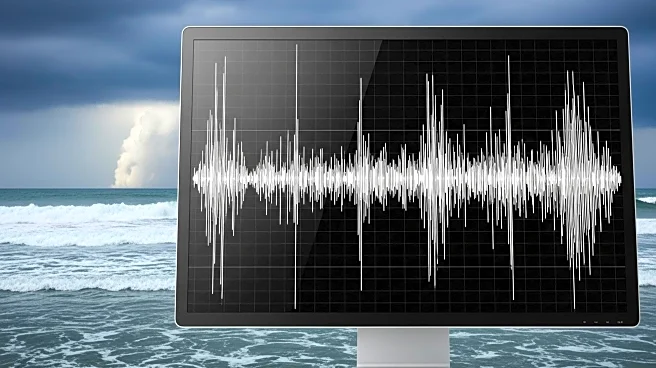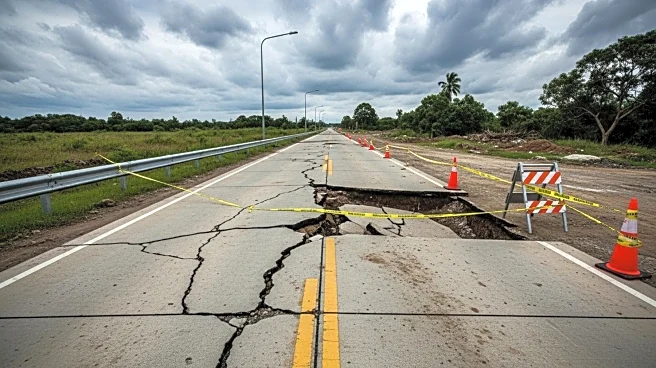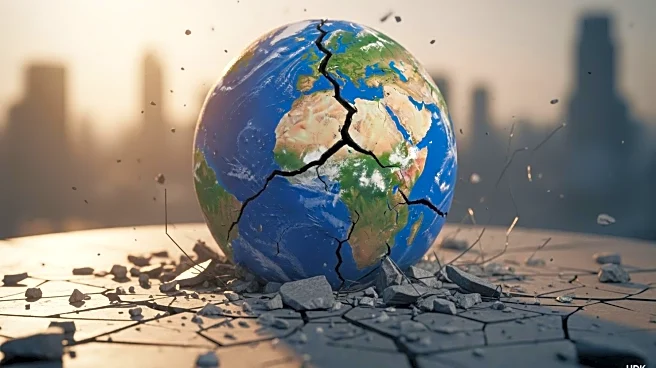What's Happening?
Two powerful earthquakes struck off the southern Philippines, killing at least seven people and prompting tsunami warnings. The first quake, with a magnitude of 7.4, occurred near Manay town in the Mindanao region, followed by a 6.7-magnitude aftershock. The initial earthquake caused significant damage, including collapsed tunnels and buildings, and led to evacuations in coastal areas. President Ferdinand Marcos Jr. has directed national agencies to carry out evacuations and coordinate with local governments. The tsunami threat has since passed, but small sea fluctuations may continue.
Why It's Important?
The Philippines' vulnerability to natural disasters, due to its location on the Pacific 'Ring of Fire,' poses ongoing challenges for disaster management and public safety. The recent earthquakes highlight the need for effective emergency response systems and resilient infrastructure. The impact on local communities and the economy is significant, as natural disasters can disrupt daily life and hinder economic growth. The government's response is crucial in mitigating the effects and ensuring public safety.
What's Next?
Authorities will continue to assess the damage and deploy rescue teams to affected areas. Relief efforts will focus on providing medical care and temporary housing for displaced individuals. The potential for aftershocks requires ongoing vigilance and preparedness. The government may seek international assistance to support recovery efforts and strengthen disaster response capabilities.
Beyond the Headlines
The frequent occurrence of natural disasters in the Philippines raises questions about long-term strategies for disaster risk reduction and climate adaptation. The ethical responsibility of the government to protect vulnerable populations and invest in resilient infrastructure is increasingly critical. Cultural factors, such as community solidarity and volunteerism, play a significant role in disaster response and recovery.











